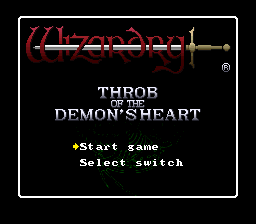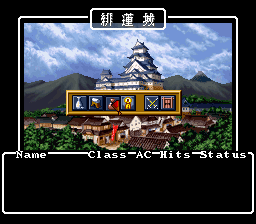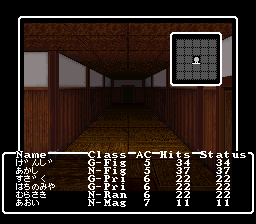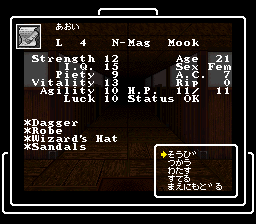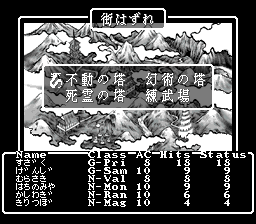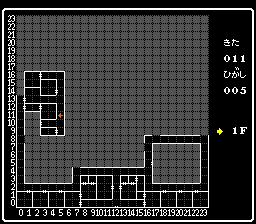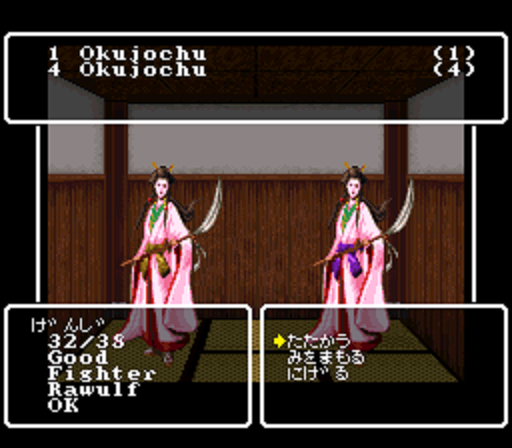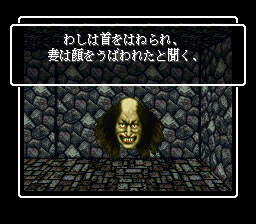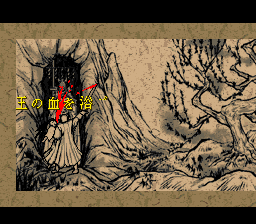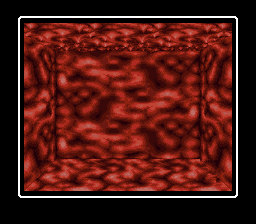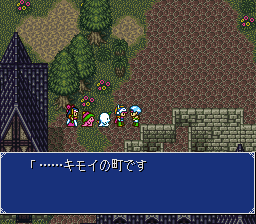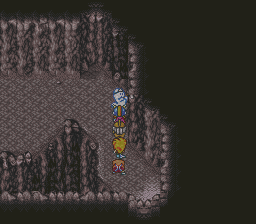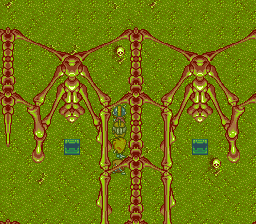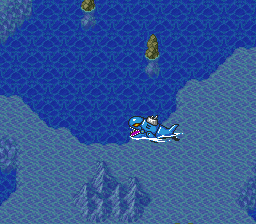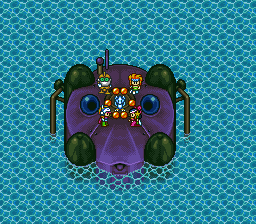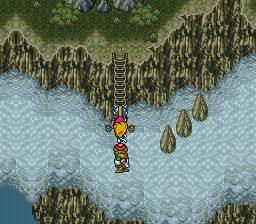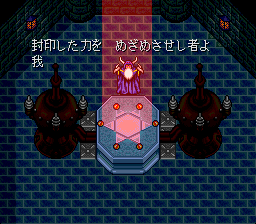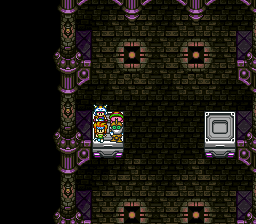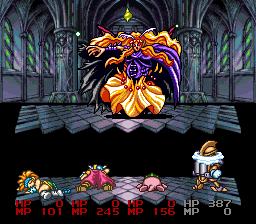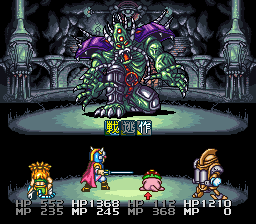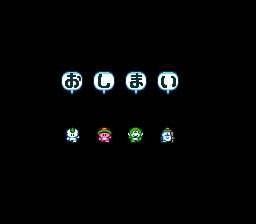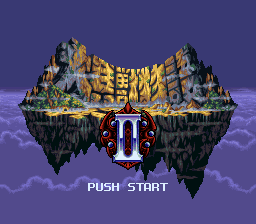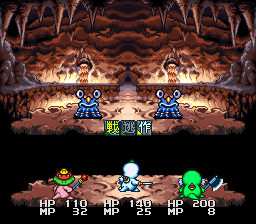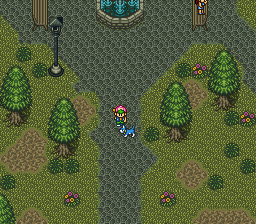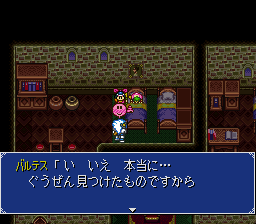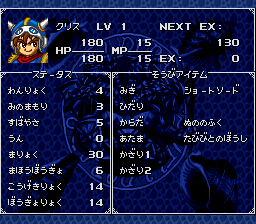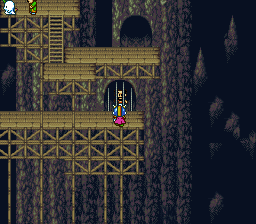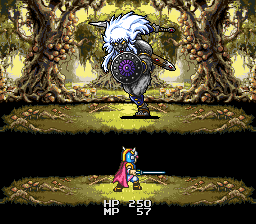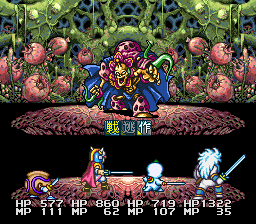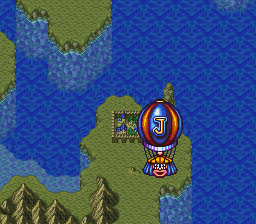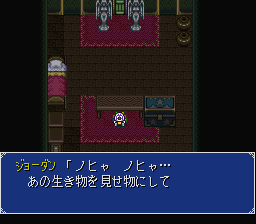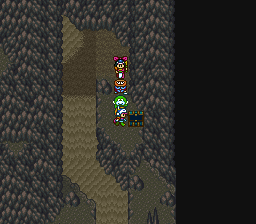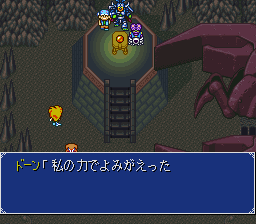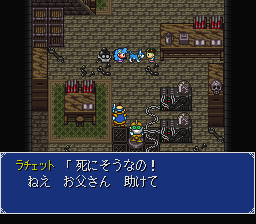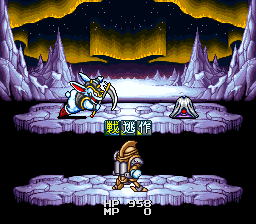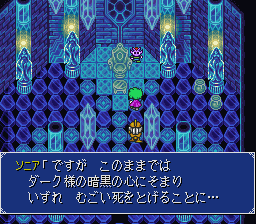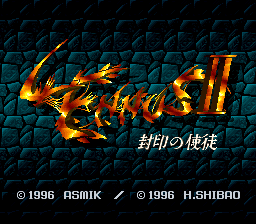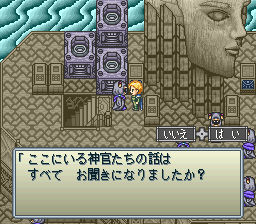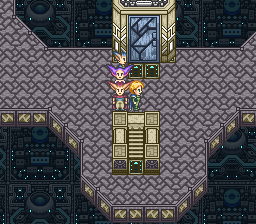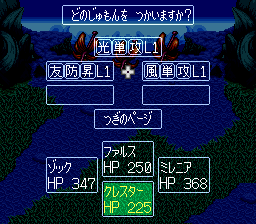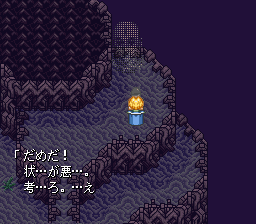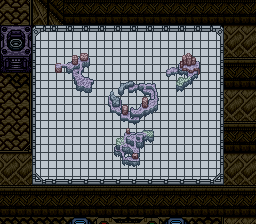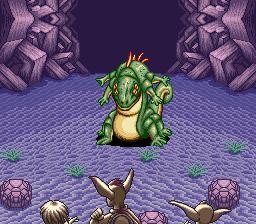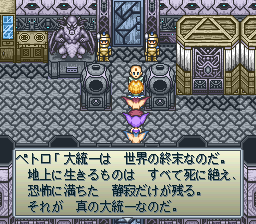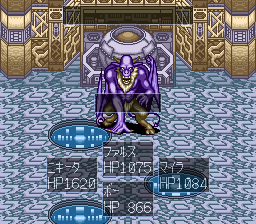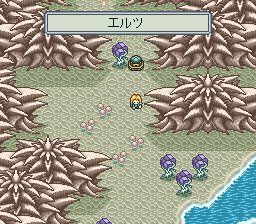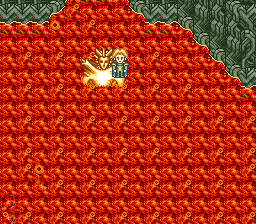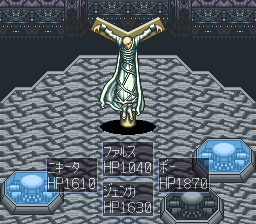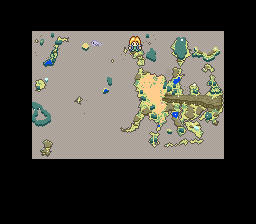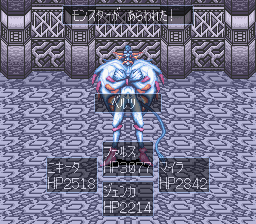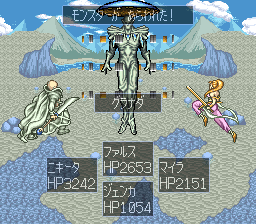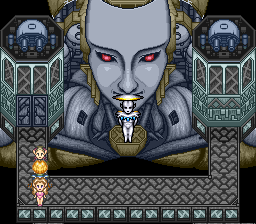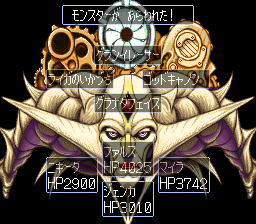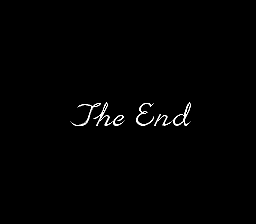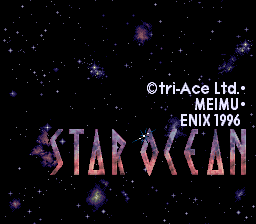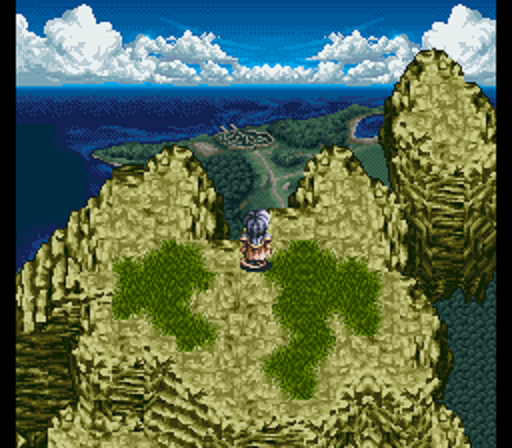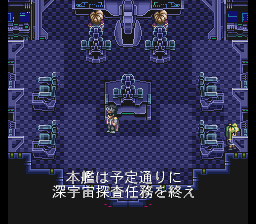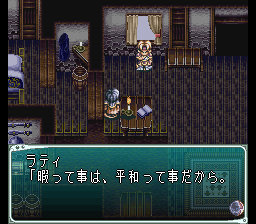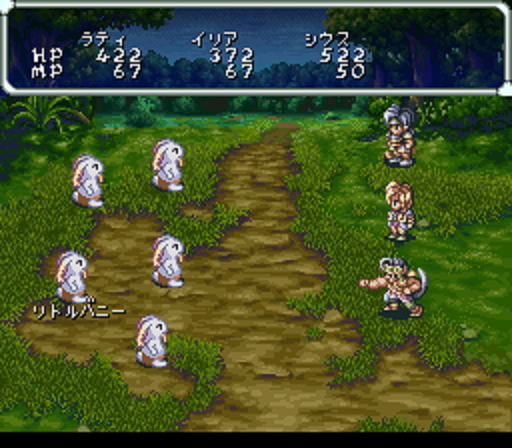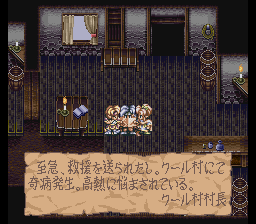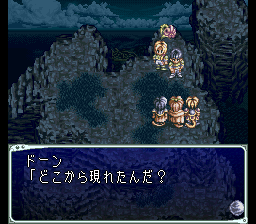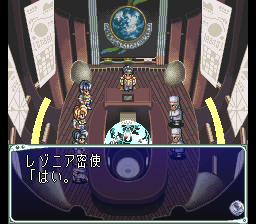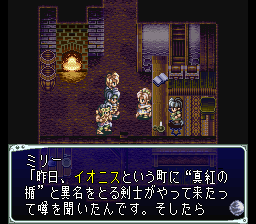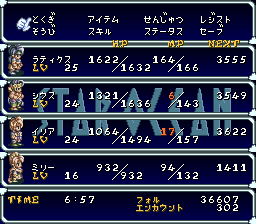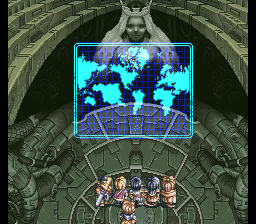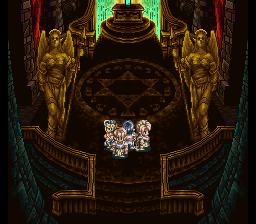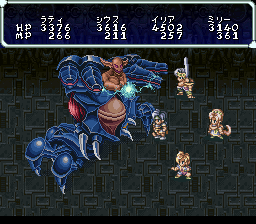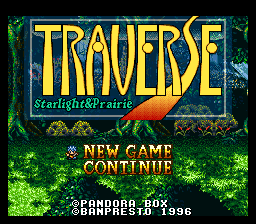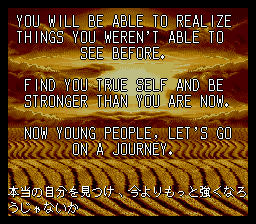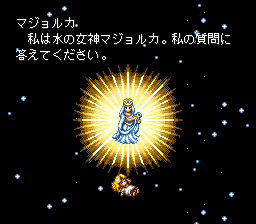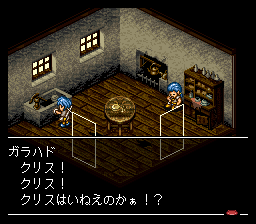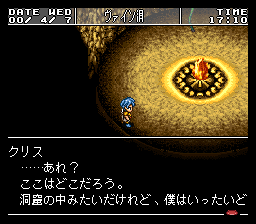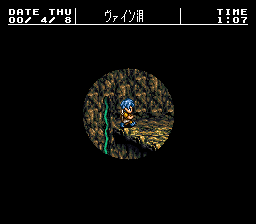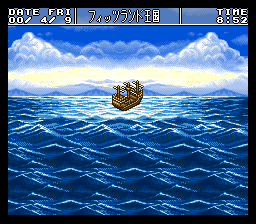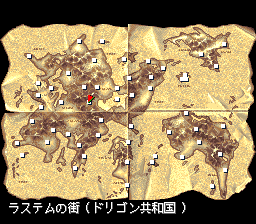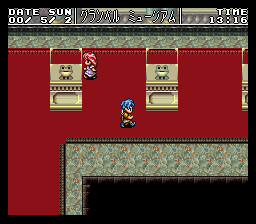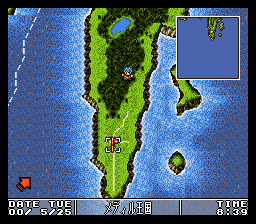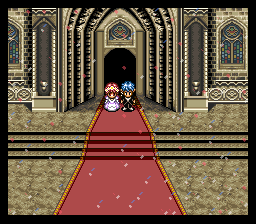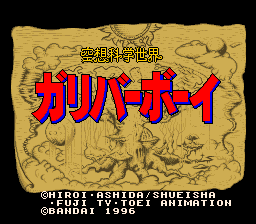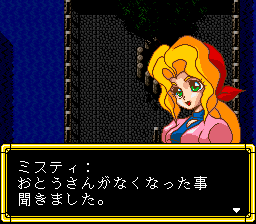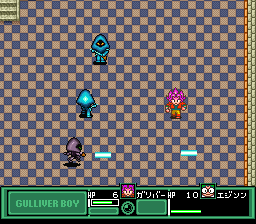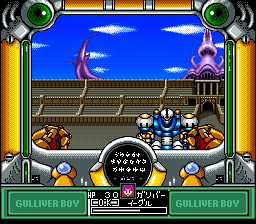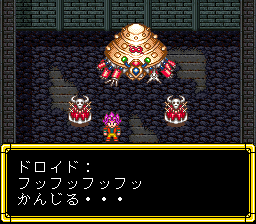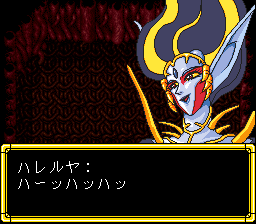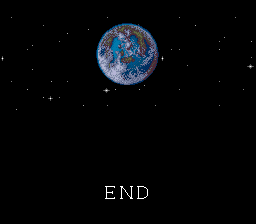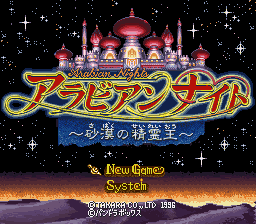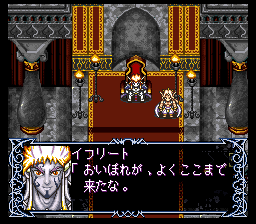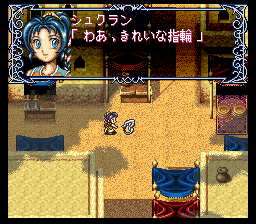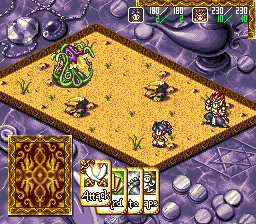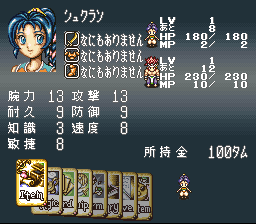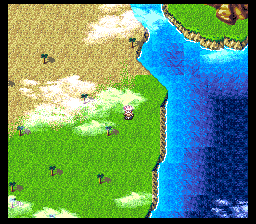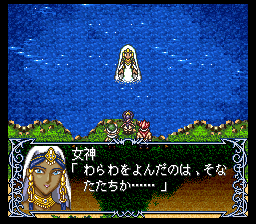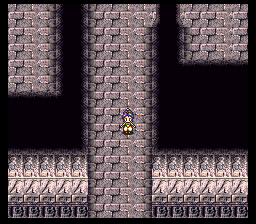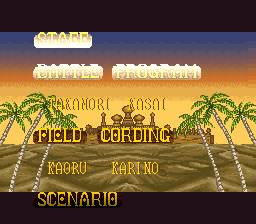Monstania (モンスタニア), released 9/27/1996, developed by Bits Laboratory, published by Pack-In Video
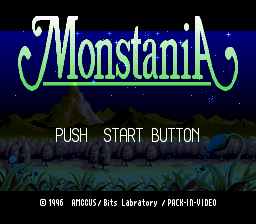
My heart sunk a bit when I saw Pack-In Video pop up as I started the game, but actually I had a lot of fun with Monstania. The genre is hard to pin down — many places consider it an SRPG but to me it’s almost more like a puzzle or adventure game. From what I can tell, the level ups and the equipment upgrades are pre-determined after each battle and there is no opportunity for grinding, buying equipment, finding anything optional, etc. That disqualifies it from being an SRPG for me, and it’s almost not really much of an RPG either.
It’s also extremely short; I finished the game in around 3h 30m. But that also makes it a good play in an era where we’re not paying full price for a cart.
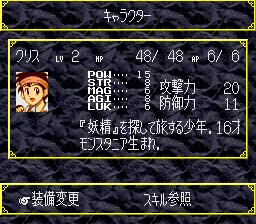
The main character is Fron (or whatever you name him), a 16 year old boy born on the island of Monstania. His obsession is finding fairies, who were supposed to exist on the island in the past but no longer do. He is present in most of the battles, and will be accompanied by at most one of the other characters. You can never choose which character will be in the battle (there are a couple of branching paths though).

The battles are on an isometric grid. You can take a turn with one of your characters, then the enemies will get a turn (some enemies only get 1 turn for every 2 of yours, some get 2 turns for every 1 of yours). Each action you take depletes your AP, although moving doesn’t. You can recover AP by either skipping a turn, or by taking an action with your other character. You can either join the two characters together and have them move around together, or separate them. Either way the enemies will be acting when one (not both) of your characters take actions.
Characters can attack, but also use a wide variety of special abilities that they get from levelling up. There are also some abilities that everyone can use (self-heal, defend, item). I believe there are about 8 characters in the game although a number of them only appear for one or two maps. Tia and Chitta are the only two characters that you will be repeatedly using. They can help out a lot with their ranged attacks and Chitta has some good AoE powers.
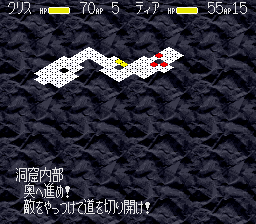
A common strategy in the maps is just to move forward slowly and deal with the monsters as they come to you, then heal up and recover AP before continuing. This works on many (though not all) of the levels. It helps if you have someone like Tia who can shoot a bow to get the monsters across the map.
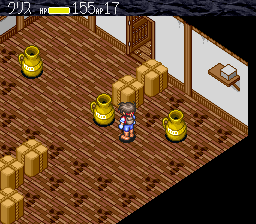
Not all of the maps are battles. There are puzzles like the one above where you have to clean up all the dirty areas without moving over the same square twice. Another one involves avoiding a rolling boulder. Other ones you have to pick up objects and place them in the proper area, and so on.
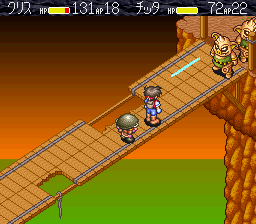
The story is not especially deep or involved; they encounter Chitta (who is in that picture), a mysterious child who is being pursued by soldiers. In the course of protecting Chitta they stumble upon a plot that could threaten the safety of the entire Monstania island.
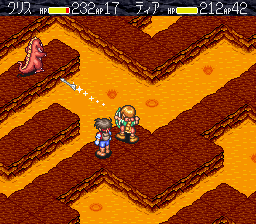
The game is not especially hard, although I did have to restart some missions a few times. The final boss is a challenge but I hadn’t used any of my items so by just repeatedly using the restore items I was able to win fairly easily. Many of the bosses are rather poorly designed because if you just run away from them they will start wandering aimlessly which gives you time to recover your AP and HP before re-engaging with the boss.
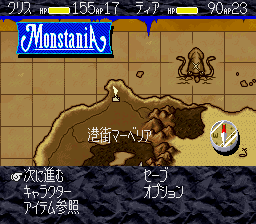
I had a lot of fun with the game and it’s definitely worth playing (It has a translation patch) since it’s so short. However, I would like to see how the game would have played if they had expanded it into a true RPG/SRPG that wasn’t just fixed level ups and equipment gains; where you could choose your party more freely and that maybe was a bit longer and more involved. I think the system is interesting and shouldn’t depend on such a rigid style of gameplay, but I guess neither Bits nor Pack-In Video ever tried this style of game again.
